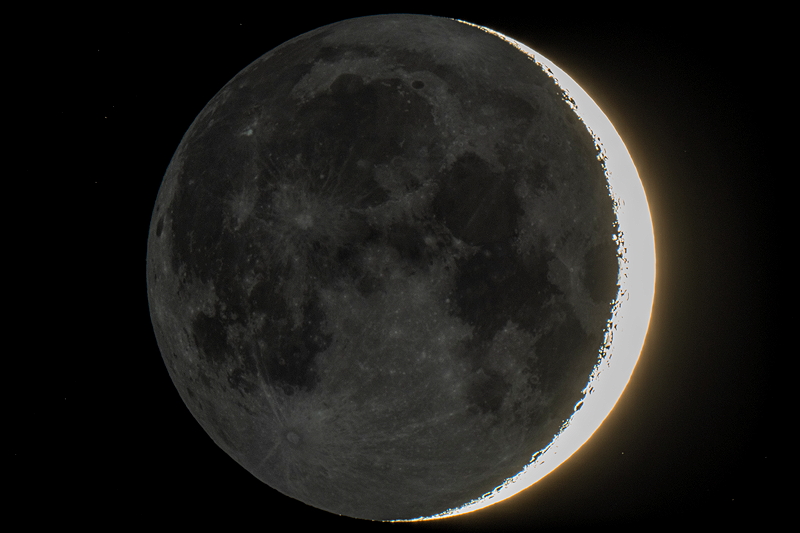NGC1398 Galaxy, James Webb Space Telescope?
Posted: 5 January 2022
Sunday, 2 January 2022, was clear, breezy, and cold. I skipped opening the observatory. Clouds returned on Monday, 3 January. Tuesday, 4 January, was clear.
|
Open: Tuesday, 4 January 2022, 1816 MST Temperature: 59°F |
Session: 1708 Conditions: Clear |
Equipment:
12" f/8 LX600 w/StarLock
2" 24mm UWA eyepiece
2" UHC filter
Focal Reducer
Camera:
D850 DSLR
1821 MST: LX600 ON, StarLock OFF, High Precision OFF.
Viewed Mercury, the Moon with Earthshine, Saturn and Jupiter. 102X.
Took this handheld photo (D850 DSLR, f/2.8, 1/15sec, ISO 1600, FL 38mm, cropped) of the western sky showing the Moon and three planets.

Mouseover or tap on image for labels
Mounted the D850 DSLR at prime focus of the 12" telescope and took these photos of the Moon and Earthshine (1/250sec and 1 second, ISO 800).


Added the UHC filter, focused on Fomalhaut, and locked the primary mirror. Slewed to NGC1398 (galaxy).
1854 MST: StarLock ON.
Began imaging NGC1398 (galaxy) but seeing and autoguiding were not good. The galaxy was low in the southeastern sky and heat from a nearby house furnace was the likely cause of poor seeing. Decided to wait for the galaxy to rise higher in the sky. 1937 MST: resumed imaging. Took six 5 minutes, ISO 3200, White Balance 4550K, StarLock autoguided exposures. One image was ruined with a passing satellite. This is a stack of five exposures (effective exposure 25 minutes) of NGC1398 (galaxy) showing the central bar and outer spiral arms.

Switched to the focal reducer without the UHC filter, focused on Betelgeuse, locked the mirror.
2020 MST: Wi-Fi ON.
Used SkySafari 7 Pro on the iPhone to GOTO the James Webb Space Telescope (JWST; which is in its database of satellites).
2023 MST: took this StarLock autoguided, 5 minutes, ISO 6400, WB4550K, image (cropped) showing what might be JWST.

Mouseover or tap on image for pointer
I should have taken a second image several minutes later to show motion for confirmation. I will do that on the next session.
2029 MST: StarLock OFF, Wi-Fi OFF.
Viewed M42 (the Great Nebula in Orion), 102X.
2040 MST: LX600 OFF.
2047 MST: Took a Sky Quality reading.
|
Close: Tuesday, 4 January 2022, 2050 MST Temperature: 47°F |
Session Length: 2h 34m Conditions: Clear, SQM 21.05 |
I have updated my recently posted review of the Explore Scientific 7-n-1 Professional Weather Station.
Comments are welcome using Email. Twitter users can use the button below to tweet this report to their followers. Thanks.
Cassiopeia Observatory Home Page
Copyright ©2022 Michael L. Weasner / mweasner@me.com
URL = http://www.weasner.com/co/Reports/2022/01/05/index.html
